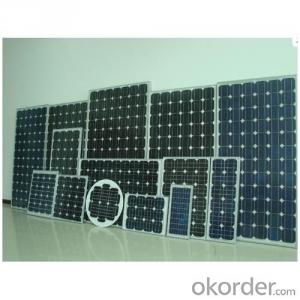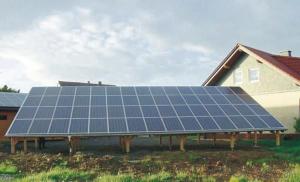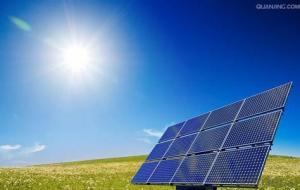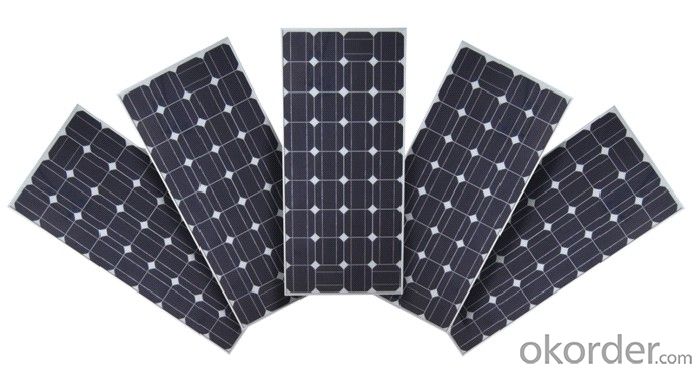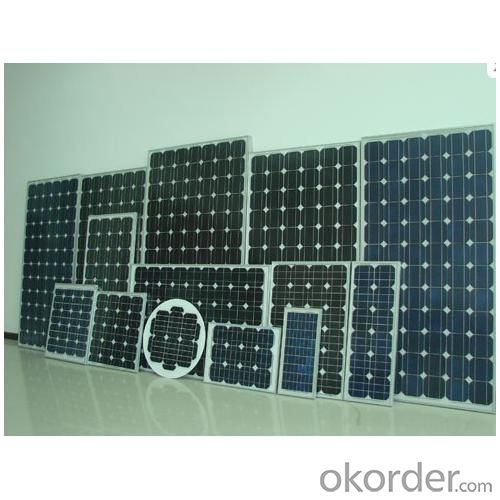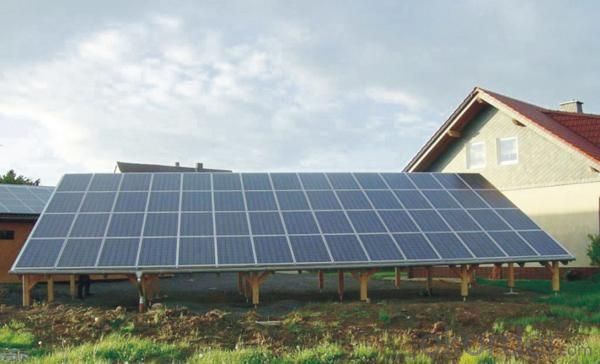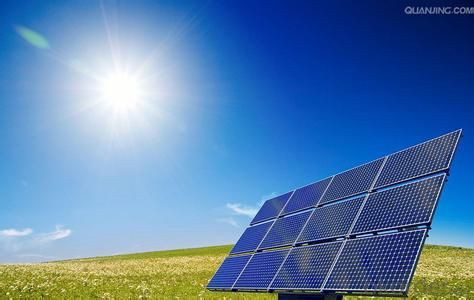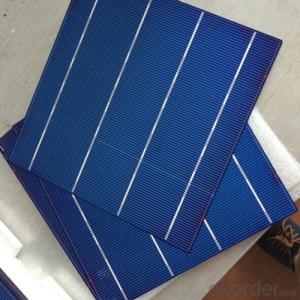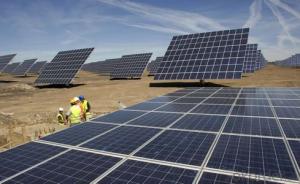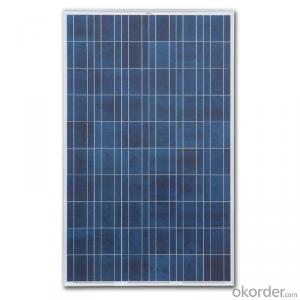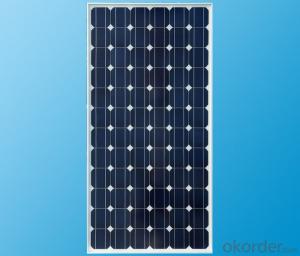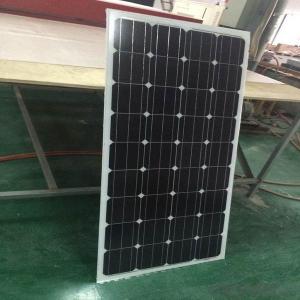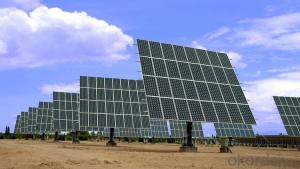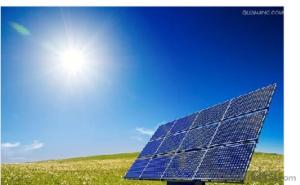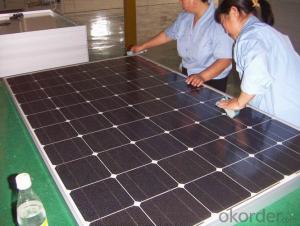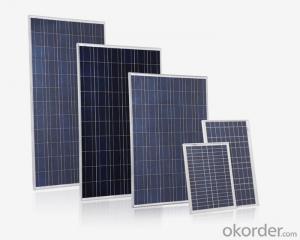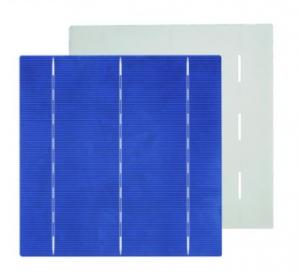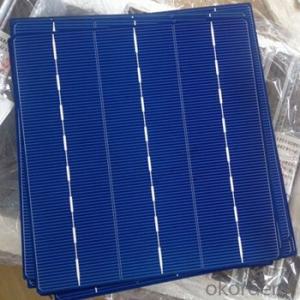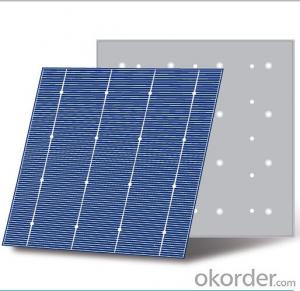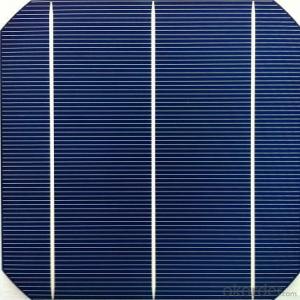Perovskite Solar Cells - Favorites Compare A Grade 300W Solar Panel with Frame and MC4 Connector
- Loading Port:
- China main port
- Payment Terms:
- TT or LC
- Min Order Qty:
- 10000 watt
- Supply Capability:
- 10000000000000 watt/month
OKorder Service Pledge
OKorder Financial Service
You Might Also Like
Quick Details
| Place of Origin: | Guangdong China (Mainland) | Brand Name: | CAP | Model Number: | 50w100w150w200w250w300w |
| Material: | Monocrystalline Silicon | Size: | 1385*1035*75mm | Number of Cells: | 72pcs |
| Max. Power: | 300w | type: | solar panel | color: | blue&black |
| warranty: | 5 years |
Packaging & Delivery
| Packaging Detail: | standard export package for solar panel |
| Delivery Detail: | 7-15 days for solar panel |
Specifications
solar panel
High Efficiency
25 years Warranty
High-transmissivity low-iron tempered glass
Solar Panel
50w100w150w200w250w300w
Characteristics
1,High and stable conversion efficienly based on over 4 years professional experience
2 ,High reliability with guaranteed +/-10% output power tolerance
3,Proven materials,tempered front glass,and a sturdy anodized aluminum frame allow modules to operate reliably in multiple mountily configurations
4,Combination of high efficicncy and attractive appearance
Quality and Safety
1,25 year 80%,10 year 90% power warranty 3 year power warranty
2,ISO9001:2000 (Quality Management system) certified factory
3,Product Quality warranty & products Liability Insurance to guarantee and user' benefits
4,Certifications TUV Intercert, CE Temperature Coefficients
| Module Type | 100w | 150w | 200w | 250w | 300w |
| Maximum Power at ST(Pmax)W | 100wp | 150wp | 200wp | 250wp | 300wp |
| Maximum Power Voltage(Vmp)V | 36/18 | 36/18 | 36/18 | 30.8v | 36/18 |
| Maximum Power Current(Imp)A | 2.77/5.55 | 4.16/8.33 | 5.55/11.1 | 8.11A | 8.33/16.66 |
| Open Circuit Voltage(Voc)V | 39.5/19.05 | 39.3/19.4 | 39.6/19.5 | 36.2V | 39.6/19.8 |
| Short Circuit Current(Isc)A | 3.04/6.09 | 4.58/9.16 | 6.1/12.2 | 8.7A | 9.16/18.33 |
| Cell Efficiency(%) | 18.60% | 18.10% | 18.60% | 17.80% | 18.10% |
| Module Efficiency(%) | 17.70% | 17.20% | 17.70% | 17.10% | 17.20% |
| Operating Temperature°C | -40°C to +85°C | -40°C to +85°C | -40°C to +85°C | -40°C to +85°C | -40°C to +85°C |
| Maximum system voltage | 1000V(IEC)DC | 1000V(IEC)DC | 1000V(IEC)DC | 1000V(IEC)DC | 1000V(IEC)DC |
| Power tolerance | -0.03 | -0.03 | -0.03 | -0.03 | -0.03 |
| Temperature coefficients of Pmax | -0.45%/°C | -0.45%/°C | -0.45%/°C | -0.45%/°C | -0.45%/°C |
| Temperature coefficients of Voc | -0.27%/°C | -0.27%/°C | -0.27%/°C | -0.27%/°C | -0.27%/°C |
| Temperature coefficients of Isc | 0.05%/°C | 0.05%/°C | 0.05%/°C | 0.05%/°C | 0.05%/°C |
| Weight(kg) | 8 | 11 | 14 | 20 | 25.5 |
| Number of cell(pcs) | 4*9 | 4*9 | 6*10 | 6*12 | 6*12 |
| Dimensions(mm) | 1194*534*35/30 | 1580*808*50/35 | 1471*670*40/35 | 1640*992*50 | 2000*1050*50 |
Making More Solar Cells from Silicon
Silicon wafers are the conventional solar cells–they’re what absorbs sunlight and generates electrons. Yet the way wafers are currently manufactured wastes half of the expensive, ultra-pure crystalline silicon they’re made from. When large ingots of silicon are cut into hair-thin wafers, waste silicon is lost as sawdust. The new process–details of which remain secret–produces wafers directly from molten silicon without any sawing. This saves material and reduces the number of steps needed to make solar cells, both of which bring down costs.
How to Grow "Silicon" Crystals to Make Solar Cells
In industry, silicon crystals are grown to form a uniform cylinder of silicon which is used as the base material for crystalline solar cells. There is plenty of silicon about on the earth, in fact, as mentioned previously, after oxygen it is the second most abundant element. When you think that sand and quartz all contain silicon and then imagine the amount of sand in the world, you begin to realize that we are not going to run out of silicon in a hurry!
The problem with sand is that it also contains oxygen in the form of silicon dioxide, which must be removed.
The industrial process used to produce silicon requires temperatures of around 3270oF (which is about 1800oC). Obviously we can't experiment with these3 sorts of temperatures at home - but we can recreate the process!
You are going to need a saturated sugar solution; this will sit in the lid of your coffee jar. Now, take a large crystal of sugar, often sold as "rock sugar" and "glue" it to the end of the skewer. Next, drill a hole the same diameter as the skewer, and poke the skewer through the bottom of the coffee jar. Stand it on a windowsill and lower the crystal into the saturated sugar solution. Over some time, crystals should start to grow - pull the skewer up slowly, bit by bit, so that the growing crystal is still in contact with the sugar solution. This is just like the way that silicon is grown. The silicon is drawn up slowly from a bath of molten hot silicon (which is analogous to our saturated sugar solution).
Once this large crystal of silicon has been manufactured, it must be cut into slices to manufacture the solar cells.
- Q: Does the solar cell generate electricity in the absence of the sun, only in the case of strong lights or lasers? If you can achieve how much, and the same day?
- Sunlight is a composite light, in which only the frequency is greater than the solar cell threshold photons can effectively stimulate the solar cell power generation.
- Q: Are solar cells affected by pollution?
- Yes, solar cells can be affected by pollution. Air pollution, such as smog and particulate matter, can reduce the efficiency of solar cells by blocking sunlight and reducing the amount of light that reaches the cells. Additionally, pollutants can settle on the surface of solar panels, creating a layer that reduces their ability to generate electricity.
- Q: Can solar cells be used in air conditioning systems?
- Yes, solar cells can be used in air conditioning systems. Solar energy can be harnessed to power air conditioning units, either by directly using the electricity generated by solar panels or by converting solar energy into thermal energy for cooling purposes. This approach helps to reduce dependence on fossil fuels and contributes to a more sustainable and environmentally friendly way of cooling buildings.
- Q: What is 3d solar cell? And anybody know any manufacturers?
- There are several hot spots in the research of solar power generation, one of which is the use of three-dimensional solar energy technology to replace the current popular flat solar cell.
- Q: Can solar cells be used for desalination?
- Yes, solar cells can be used for desalination. Solar energy can be harnessed to power desalination systems, such as reverse osmosis or solar stills, which convert saltwater into freshwater by separating the salt and impurities from the water. This sustainable and renewable energy source has the potential to provide a clean and cost-effective solution to meet the increasing demand for fresh water in regions with limited access to clean water sources.
- Q: What is the role of maximum power point tracking in solar cell systems?
- The role of maximum power point tracking (MPPT) in solar cell systems is to optimize the energy output of the solar cells. It does this by continuously adjusting the operating voltage and current of the solar cells to find the maximum power point, where the solar cells are operating at their highest efficiency. MPPT ensures that the solar cells are always delivering the maximum amount of power to the system, resulting in improved energy generation and increased overall system performance.
- Q: Can solar cells be used for powering military bases?
- Yes, solar cells can definitely be used for powering military bases. Solar energy is a reliable and sustainable source of power that can provide electricity to meet the energy demands of military facilities. By utilizing solar cells, military bases can reduce their dependency on fossil fuels, enhance energy efficiency, and contribute to a cleaner and greener environment. Additionally, solar power systems can be installed in remote or off-grid locations, making it an ideal solution for powering military bases in various terrains and regions.
- Q: Can solar cells be used for powering shopping malls?
- Yes, solar cells can be used to power shopping malls. With their ability to convert sunlight into electricity, solar cells can provide a sustainable and renewable energy source for shopping malls, reducing their reliance on traditional power grids and lowering their carbon footprint. Additionally, the large rooftop spaces available in shopping malls make them ideal for installing solar panels, maximizing energy generation potential.
- Q: What are the safety considerations when installing solar cells?
- When installing solar cells, it is important to consider several safety precautions. First and foremost, it is essential to work with a qualified and experienced installer who understands the necessary safety protocols. Additionally, proper electrical safety measures should be taken, such as turning off the power supply and using insulated tools. It is crucial to follow all manufacturer instructions and guidelines to ensure safe installation. Working at heights should also be approached with caution, using appropriate fall protection equipment when necessary. Lastly, it is important to be aware of potential hazards such as sharp edges, hot surfaces, and electrical shock risks. Regular maintenance and inspections should be conducted to ensure ongoing safety.
- Q: What is the role of surge protectors in solar cell systems?
- The role of surge protectors in solar cell systems is to protect the sensitive electronic components, such as inverters and charge controllers, from power surges and voltage spikes that can occur due to lightning strikes, grid fluctuations, or other electrical disturbances. Surge protectors help to minimize the risk of equipment damage and ensure the long-term reliability and efficiency of the solar cell system.
Send your message to us
Perovskite Solar Cells - Favorites Compare A Grade 300W Solar Panel with Frame and MC4 Connector
- Loading Port:
- China main port
- Payment Terms:
- TT or LC
- Min Order Qty:
- 10000 watt
- Supply Capability:
- 10000000000000 watt/month
OKorder Service Pledge
OKorder Financial Service
Similar products
Hot products
Hot Searches
Related keywords

